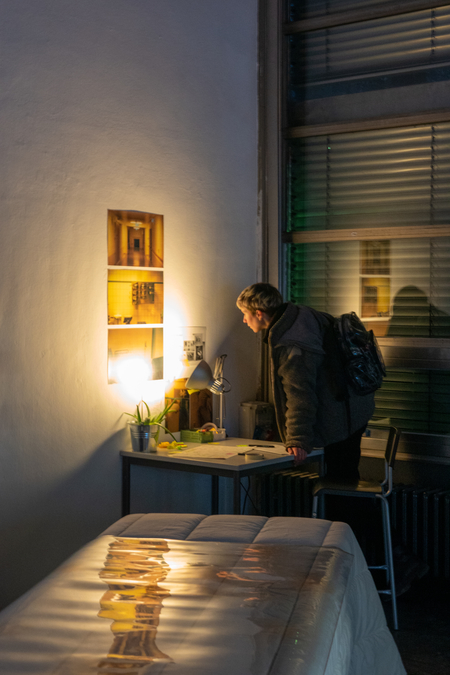Art in the hospital: not an aesthetic end in itself
Students from the New Media class (Kunsthochschule Kassel) cooperate with Klinikum Kassel.
Dr. med. Kia Homayounfar (Director of the Clinic for General and Visceral Surgery at Klinikum Kassel) wants to break up entrenched structures. He is taking a critical look at everyday hospital life in order to promote the well-being of patients and employees. That's why, together with Prof. Joel Baumann (Kunsthochschule Kassel), he developed the idea for the "Art in the Clinic" project. The project explores the question of what moves people in the clinic and what art can do in this place. Studies show that the effect of art in hospitals is an important factor in rehabilitation. For example, colorfully designed rooms have a positive effect on the patient's recovery process. Prof. Baumann and Dr. Homayounfar acquired 15,000 euros for the project. The grant money will be used to procure the working materials and to finance the purchase of the artistic works created for the Kassel Clinic.
At the start of the project (winter semester 2022/23), the 16 students held talks with employees at the hospital and with their patients. Tuki Gruner admits to initial difficulties: "I find the atmosphere in the clinics oppressive and visually stifling," says Gruner, and goes on to explain: "The subject is generally difficult. The shortage of nursing staff, two-class medicine and privatization are major problems in our health care policy." That's why Gruner uses an interactive "coloring book" to question clinic structures: "I want to actively involve people in the clinic and get them thinking. For example, when I encourage them to illustrate their feelings or describe how it feels to be in the waiting room," says Gruner.
The results of the first phase of the project are expressed in various artistic positions: from illustrations and audio recordings to sculptural and digital works. The works deal with the hospital as a place and the people who work or receive care there. For example, artist Alix Kokula sketches scenes from everyday hospital life in her book. Vreneli Harborth deals with the topic of "invisible work": a picture made of needles and yarn that glows in the dark draws attention to the people whose work is invisible. Another student is developing a cell phone app. When app users virtually walk through a room with "Jungle to go," plants will be displayed, creating a new sense of space.
"For those of us involved in the project, it's not about having a work of art hanging on the wall in the hospital's rooms or about art serving as an aesthetic end in itself. Our works are intended to help people feel more comfortable in the clinic. At the same time, we want to promote a public discourse on the topics of work and staying in clinics," Gruner emphasizes. In addition, Gruner is convinced that it would be important to implement art in the hospital through a curation person in the staff structure: "The integration of art in the hospital today corresponds to a holistic understanding of healthcare. Studies show that art and design have a positive impact on patients, staff and visitors."
The students are currently in the midst of the artistic design process. The plan is to show the project results in an exhibition later this year.
(Text in German: Çiğdem Özdemir)

